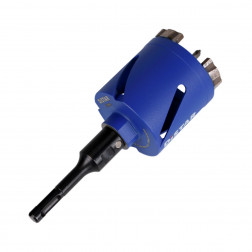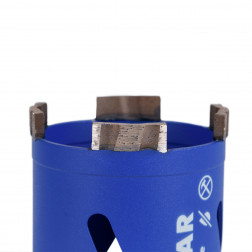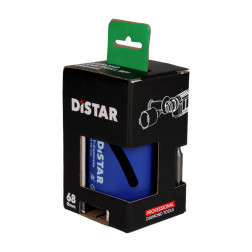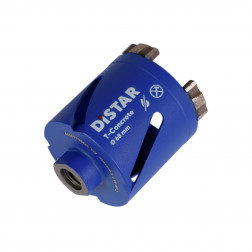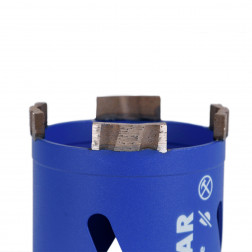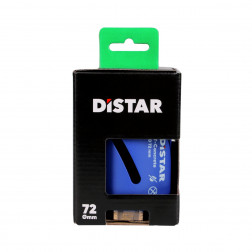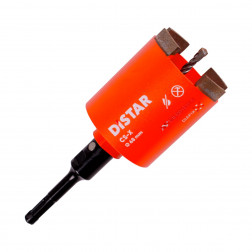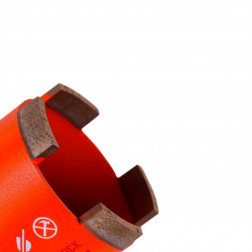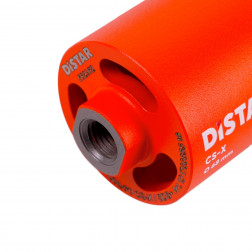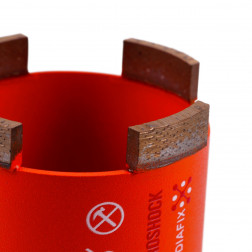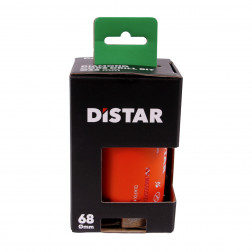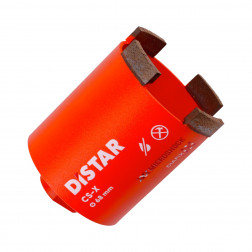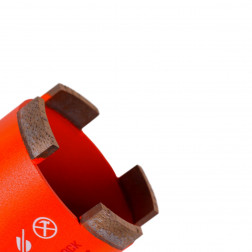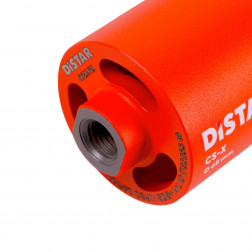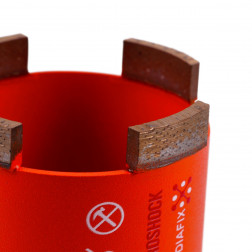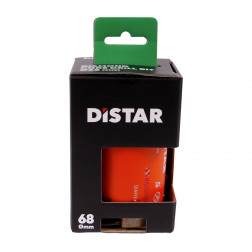Core drills for Diamond drill 68
12 modelsDiamond drill bits for diamond drill
Hole drilling for plug sockets, air conditioning or heating systems and many other tasks in concrete and other building materials cannot always be done with a conventional drill or pneumatic hammer.
This applies especially to holes that are drilled deeper than the sub-socket. Special diamond drills can help in such cases, as they are considerably more powerful than the aforementioned equipment and can quickly drill through even the toughest materials to varying depths.
Diamond drill bits for diamond drills are used as consumables on such equipment.
For simple tasks such as drilling holes for socket outlets, a conventional pneumatic hammer or drill is sufficient, but if your range of work is more extensive, a diamond drill cannot be avoided. A great many construction tasks can be performed with this type of equipment:
- Openings for heating and air conditioning systems.
- Process openings for water supply, sewerage and riser pipes.
- Making holes for the air ducts.
- Performing different niches.
- Holes for the electrical network.
- Process openings for fire extinguishing and alarm systems.
And that's not the whole list of construction tasks that can be carried out with a diamond drill. When selecting such equipment, attention must be paid to certain parameters that may influence the range of tasks to be performed:
- Power. The minimum power for this equipment is 1500 W and the maximum power can exceed 3000 Wt. A substantial power reserve will not only allow you to get the job done faster, but will also extend the life of the tool, so it is best to choose a more powerful drill.
- Maximum drill bit diameter. Manufacturers always indicate which size drill bit is recommended for their equipment. Often the maximum diameter for a diamond drill is 122-132mm, but in lightweight materials such as brick or aerated concrete it can be as much as 162mm.
- Weight of the equipment. Since drilling is done manually, and can take place in the ceiling or with outstretched arms, it is better to select a lighter drill. After all, in addition to holding its own weight, it will also be fitted with a diamond consumable.
- Additional functions. The most common optional functions include multiple speed modes, tool overload clutch, soft start and tool overheat monitoring. All these functions affect the quality of work, operator safety and the life of the tool itself, so the more options available, the better.
Almost all handheld diamond drills are designed for dry-running, with the exception of a few models. Dry construction material treatment can even be used in rooms that have already been renovated, as there is no dirt sludge that can be spread around the room. However, dry processing generates a lot of dust.
For example, one socket hole produces about a cup of dust, which can fly to the furthest corners of the room. And for a premise with a ready-made renovation, this is a huge disadvantage. To minimise drilling dust, TM Mechanic manufactures a special overlay called "DrillDuster 2.0".
The design of the unit creates a strong vacuum that allows it to be mounted even on horizontal and ceiling surfaces.
In addition to the dust extraction device, TM Mechanic manufactures a special device for the easy alignment of drill bits - "Centrator". A special borring machine is used as an alignment aid on drill bits for socket boxes, but it cannot be fitted to longer drill bits and this is where the Mechanic Centrator device comes into play. This device is available in three models, each of which can be fitted with two drill bit diameters - 42\52, 62\72 and 82\102 mm.
On the Distar website, you can choose from a variety of diamond consumables in a wide range of diameters and with different bores. In addition to the diamond consumables themselves, there are accessories available for more comfortable, cleaner, dust-free work.
The extensive range of diamond drill bits will leave no customer without the consumables they need. Our managers will advise you on the processing of various materials.

